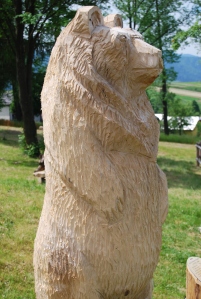I have to say it straightaway that the title of this post is somewhat misleading. In fact, I’m going to show you how to separate curds from whey in leftover milk, which some people like to call ‘old’ milk. I, for my part, would never use the term for the milk that is close to, or just past its sell-by date. The reason is simple. Leftover milk is such a wonderful ingredient to work with. It can be turned into a few very nutritious products right in your kitchen.
When I was a schoolgirl, my mum would never throw away milk that was just starting to turn sour. Instead, she would make tvaroh out of it by letting the milk ferment naturally. Tvaroh is a Slovak name for curds that form after heating fermented milk, and are very close in consistency to cottage cheese.
The good thing about home-made tvaroh is that you only need leftover milk and a few basic kitchen utensils to make it. Besides fresh, creamy curds you’ll also get a ricotta-like cheese in the second stage, and whey as a by-product of fermentation process. What can you do with them? Read on to find out.

What you need:
- 1 litre regular pasteurized milk (preferably whole fat)
- a cooking pot
- a strainer
- a piece of cheesecloth or muslin cloth*
- a slotted spoon and a wooden spoon
- a pot or deep bowl to catch the whey
- a lidded bottle to transfer the whey into
*I used a round piece of cotton cloth made from an old clean bedsheet
Bear in mind that …
- UHT milk (milk pasteurized at ultra-high temperatures) won’t curdle well
- the strainer should be the right size to fit the pot or bowl (as seen in the photo above)
Method:
- Pour the milk in the cooking pot, cover with a lid and let it sit in a warm place. The lactic bacteria present in milk will kick-start spontaneous fermentation. Depending on how old the milk is, it will turn sour naturally in 24 – 48 hours.

- Put the milk over a low heat and stir gently with a wooden spoon until it throws the first bubbles. At this point the milk will have curdled and separated into white lumps (curds), and a translucent yellowish liquid (whey). Remove from the heat and transfer onto a mat or a wooden board.
- Fix the strainer onto another pot or deep bowl and line it with the cheesecloth or muslin cloth. Take the curds out with the slotted spoon and onto the strainer. Let sit for 5 – 10 minutes for the whey to drain, then spoon the curds off the cloth into a clean, small bowl or a jar.
- There will still be fine curds left in the remaining whey, so pour all the contents of the cooking pot onto the strainer and let the whey drain again. This will take up to 2 hours, so be patient. As a reward, you’ll get a nice and creamy ricotta-like cheese. Transfer the collected whey into the bottle and screw on the lid.
And what to do with the cheese and the whey? Well, I sprinkled the ricotta-like cheese with cinnamon, added some honey and ate it up while still warm. Delicious!
I also tried drinking the raw whey and it tasted so refreshing. Mind you, the whey is still rich in whey proteins. I’m going to refrigerate and freeze it in batches for later use in soups.
As for the tvaroh, curds, cottage cheese or whatever you like to call the primary product of this simple cheese-making process, it’s perfect as a filling for pancakes and other desserts.It can also be made into a savoury snack by adding some salt, black pepper, olive oil and herbs, like freshly chopped chives or basil. If not used immediately, the cheese will keep covered in the bowl and refrigerated for up to 5 days.






3 thoughts on “How to make your own cottage cheese”